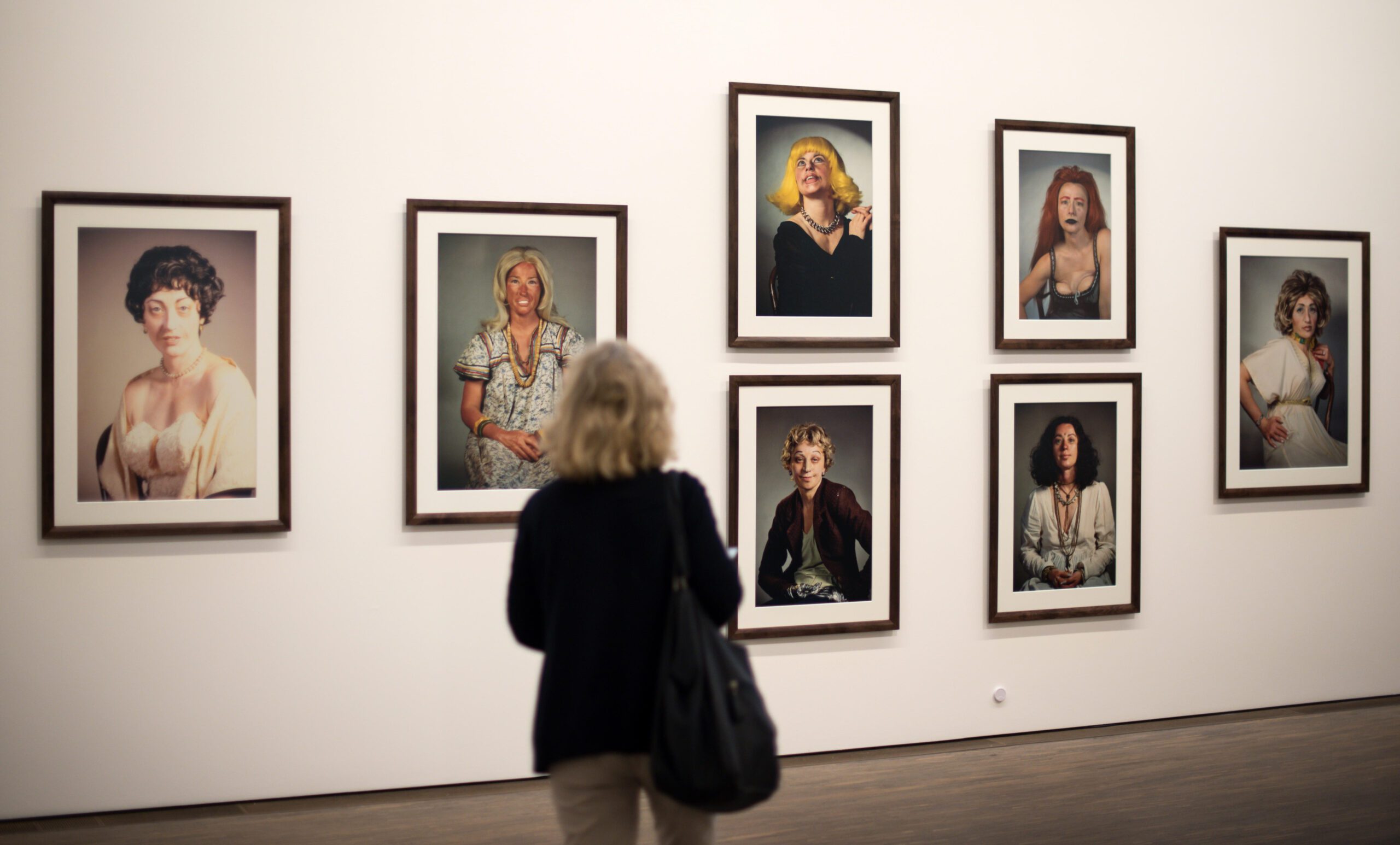
Who is Cindy Sherman?
Cindy Sherman is an American photographer born in New Jersey in 1954. She began her art education in 1974 at the visual department at Buffalo State College. Originally a painter, she explored photography as a medium, where she would grow to achieve notoriety.
Sherman realized she could create more individualized art with a camera.
Biography
Sherman is considered to be a part of the Picture generation. Her contemporaries include Robert Longo, Sherrie Levine, Louise Lawler, and Richard Prince. Cindy Sherman is considered to be one of the most influential artists of her generation, having her work exhibited in some of the world’s most prestigious museums, including the Museum of Modern Art and the Whitney Museum of American Art in New York City, the Centre Georges.
Her interest in creating characters with costumes and dress-up translated into her oeuvre spanning nearly four decades. She used props and facial expressions to embody archetypes such as “the jaded seductress,” “vulnerable naif” or “unhappy housewife.”
Cindy Sherman’s Artistic Style
Sherman’s cinematic style hearkens to classical black and white movies, and the styling and composition are reminiscent of film stills. Her artistic style is described as total performance art, as she puts on the various roles of characters to make her images.
Sherman transitioned from black and white to color photography and has always preferred to shoot film. In her works, she embraces the role of the traditionally male photographer and female subject to be both. She transitioned from the ultra-femme, traditional portrayals in her first series to more ambiguous, male characters and eventually distanced herself from being the subject.
Sherman was awarded an honorary doctorate from the Royal College of Art, London in 2013.
She has won multiple awards These include the Larry Aldrich Foundation Award (1993); Wolfgang Hahn Prize (1997); Guild Hall Academy of the Arts Lifetime Achievement Award for Visual Arts (2005); American Academy of Arts and Sciences Award (2003); National Arts Award (2001); and the Roswitha Haftmann Prize (2012).
Major Works Analysis
Untitled Film Stills (1970-1980)
This series of seventy black and white photographs is probably Sherman’s most recognized work.
She features as the main figure in each of the shots. The solitary heroine, there are no men in any of the shots. The body of work explores female stereotypes prevalent in cinematic tradition 1950 and 1960s Hollywoods, B movies, European art-house movies. It also embodies the art-noir style. The portraiture itself looks like the promotional stills that would be used to advertise those films.
In this series, Untitled Series #48 sold for $2,225,000 in 2014. It depicts a female hitchhiker waiting by the side of the road.
The medium is gelatin silver print.
Centerfolds Series (1981)
This series of 12 photographs is Sherman’s first foray into color photography. The photographs initially were commissioned by ArtForum magazine. Each photo measures two feet by four feet. For its time, this was a massive scale, and it created a lifelike experience that immersed the viewer into the image.
Each photo is rendered horizontally as a callback to magazine centerfolds. “Untitled #96” became the most expensive photograph ever sold in 2011. A buyer purchased it for $3,890,500 at Christie’s, New York.
Untitled #92 depicts Sherman with a pixie cut and schoolgirl outfit. It sold for $2,045,000 in 2013.
Fairy Tales (1985)
Fairy Tales series Cindy Sherman is a series of photographs by American photographer Cindy Sherman, first exhibited in 1985. It was a series commissioned by Vanity Fair to depict fairy tales. After reading Aesop, the Brothers Grimm, and other stories, her depictions showed the more grotesque elements of the classic stories. The medium for this series is color coupler print. During the Fairy Tales era, Sherman began using prosthetics and makeup as artistic expressions.
From the Fairy Tales series, Untitled #153 depicts a blonde woman in the grass. It sold for $2.7 million in 2010.
Art History Series (1989)
This series depicts the artist rendering photographic versions of classic European paintings. Number #209 is, while not an exact replica of the Mona Lisa, the viewer can immediately see the connection. Also called the Old Masters series, it comprises 35 full-color photographs from the Renaissance era as well as from Rococo, Neoclassical, and Baroque.
Sherman completed this series while she was living in Rome.
Black & White Series (1999)
While for the most part, Sherman’s work is in color, her Black & White series 1999 returns to her original medium of black and white photography. However, much like the Disasters series, she removes herself from the subject matter of these photographs.
She uses toys like Barbies or other dolls and melts them or cuts them to be the focus of the photos. The mutilated dolls are depicted in suggestive positions and subject matter to blur the line between humor and horror, reality and imagination.